10 Largest Natural Ports
A natural harbour is a sheltered body of water partially or completely protected from open sea waters by a natural structure like a bay, inlet or headland. Such harbours are ideal locations for major cities and allow ships to dock since they also have deep waters.
In earlier times and even today, many natural harbours are used for military purposes, apart from their commercial uses. Hence, they have strategic importance and play a key role in developing maritime transportation and trade. Many of the world’s biggest and busiest ports lie in these natural harbours.
Due to geological processes like erosion, sedimentation and glacial activity, these natural harbours eliminate the need for breakwaters and lead to calmer conditions within the harbour.
Now that we have understood what a natural harbour is, let’s find out about the ten largest natural ports in the world.
1. Port Jackson/ Sydney Harbour, Australia
Port Jackson, also known as Sydney Harbour, is an inlet of the Tasman Sea, part of the South Pacific Ocean. It is said to be the world’s largest and deepest natural harbour.
Port Jackson comprises waters of Sydney Harbour, Middle and North Harbour, Lane Cove and Paramatta Rivers.
It is 19 kilometres long, spanning 55 square kilometres, making it one of the world’s finest natural harbours and the principal port facility of New South Wales, Australia. It has a minimum and maximum depth of 9 metres and 155 ft at low water.
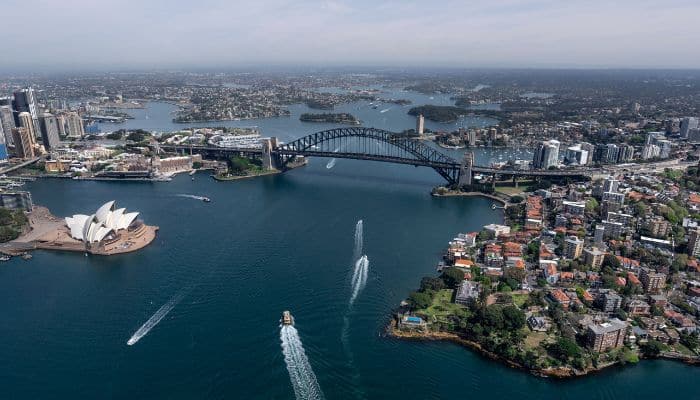
The harbour’s irregular foreshores go beyond 150 miles, providing extensive docking facilities, while the main wharves are close to Sydney’s business district.
The entrance to the harbour is 1.5 miles wide amidst the North and South Heads, home to the naval and military stations of the country. It is also the site of the famous Sydney Opera House and the Sydney Harbour Bridge.
The port handles a variety of cargo like petroleum products, dry bulk, general cargo, containers etc. Approximately 29,200,000 tonnes of cargo, including 1,779,000 TEUs, 2600 ships and 250,000 passengers, are handled at the port annually.
2. Poole Harbour, UK
The second largest harbour in the world is said to be the Pool Harbour in Dorset, southern England. It was formed at the end of the last ice age and serves as an estuary for many rivers, the biggest being Frome. It also has a long history of settlement going back to pre-Roman times.
It is shallow, with an average depth of 48 cm and has a main dredged channel from its entrance to Holes Bay. The harbour covers around 36 square km and handles both passengers and cargo.
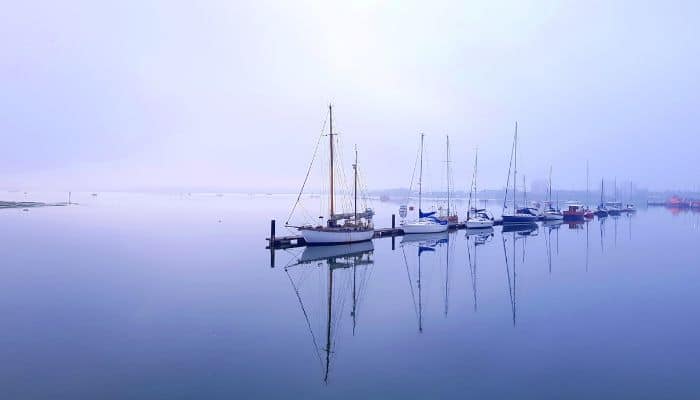
The harbour is visited by coastal vessels, fishing vessels and cargo ships. It is a popular place for recreational sailing and boating and has marinas.
The port handles RORO, bulk, and chemicals and has private quays for dealing with sea-dredged sand, timber, petroleum products etc. It also provides onshore and offshore oil support services. Approximately 1,130,000 tonnes of cargo and over 4000 TEUs are handled annually at Poole Harbour.
3. Port of Cork, Ireland
Cork is a natural harbour at the mouth of River Lee, County Cork in Ireland. It has been an important port and also a defensive hub for centuries. It was the site of traditional heavy industries in the 20th century, which gave way to the present-day energy generation, shipping and shipbuilding, refining and pharmaceutical industries.
Cork Port is 15 nm from the Celtic Sea and lies on the southern coast of Ireland. It comprises the areas of Cobh, Whitegate and Ringaskiddy. It is also close to the shipping lanes leading to northern Europe.
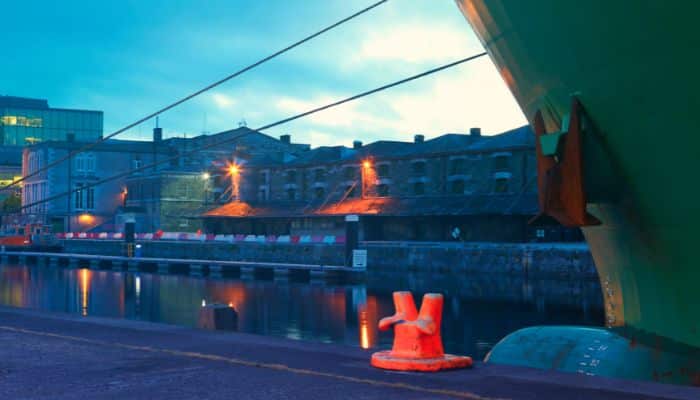
The port is well-equipped and has excellent road and rail connections between other parts of Ireland, enabling speedy cargo distribution.
Main exports include livestock, dairy, petroleum products, ammonium, woodchips and urea. Imports consist of grains, feedstuff, molasses, timber, fertilisers, magnesite, coal, ore, gas, acids, bananas, cement, steel, vehicles and salt.
Approximately 2260 ships, 8,800,000 tonnes of cargo, 147,500 TEUs, and 52 cruise ships carrying over 100,000 passengers are handled annually.
4. Port of Trincomalee, Sri Lanka
The Trincomalee Port is one of the largest natural harbours in the world, located on the northeast shores of Sri Lanka.
Its strategic position in the heart of the Indian Ocean has shaped the region’s history. The Dutch, French, Portuguese and British fought many battles to gain control of the harbour. In 1942, the Japanese Navy sank 3 British ships anchored at Trincomalee Harbour.
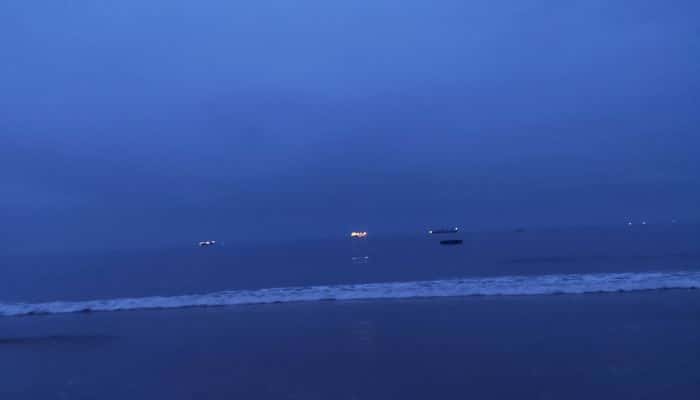
The picturesque harbour is surrounded by highlands, and two headlands bound its entrance. It has 1630 hectares of water, and the entrance channel is 500 m wide. It also has many submarine canyons, making it one of the world’s finest and most beautiful deepsea harbours.
The port has an inner and outer jetty, a jetty for handling cement, one for Oil and the Ashroff Quay for general cargo. The main commodities handled here include wheat, clinker, petroleum products, cement, sand, wheat bran pellets, bulk etc.
There is a separate berth for cruise ships, and though there are few berths for cargo ships, vessels of any size can be accommodated in the anchorage area.
5. Port of Mahon, Minorca
With a length of 6 kilometres, a 1200 m width and a 30 m water depth, the port of Mahon, Minorca, is one of the world’s longest and biggest natural harbours. It is considered the largest natural harbour in the Mediterranean.
The city has English architecture, summer houses, defence structures, and many spots perfect for excursions and knowing Minorca’s history. Yachts and cruise ships also dock at the port.
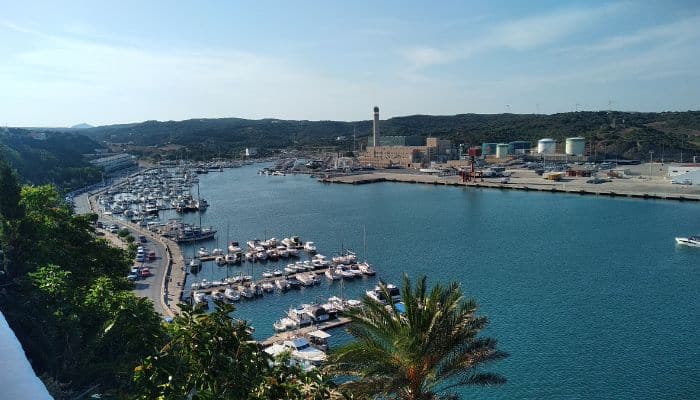
Visitors can explore the port and the neighbouring water in a catamaran. It offers regular passenger and cargo services to Palma and Barcelona. The east and west docks cater to passenger ships and cruises, while Cos Nou Dock, with 3 RORO ramps, handles commercial traffic.
The port deals with containers, bulk, liquids, general cargo, and RORO.
This facility handles approximately 866,300 tonnes of cargo and 800 vessels annually.
6. Port of Halifax, Canada
Halifax is a natural port located on the eastern coast of Nova Scotia and is accessible directly from the Atlantic. It covers 10 square kilometres of land area and 150 km2 of water.
It is a deep, wide and ice-free facility with minimal tides. The port is close to Europe and Southeast Asia than other North American East Coast Ports. Also, it is one of the few ports in the region that can accommodate and serve fully loaded post-Panamax container ships.
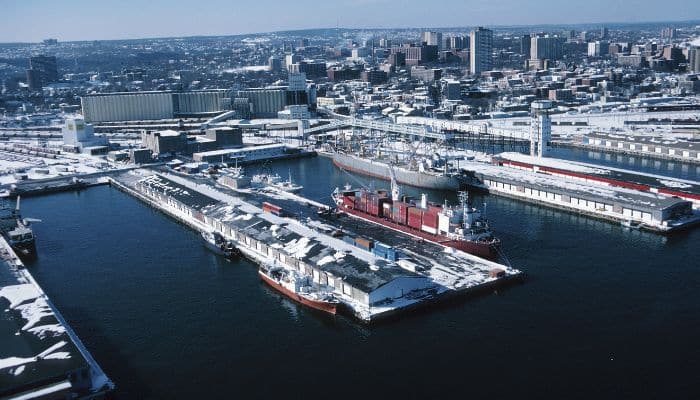
World’s top 17 shipping lines call the port, which offers transhipment, feeder and direct access to Canada’s national railway network and is connected to most North American Markets and more than 150 nations.
The port handles 1500 ships every year, generating 15,000 jobs and $ 2 billion in economic activity. It deals with all kinds of cargo ranging from food, including grains and perishables, to machines, automobiles and containers.
Around 12,300,000 tonnes of cargo and more than 490,000 TEUs are handled here annually.
7. Falmouth and Carrick Roads, Cornwall, U.K
Falmouth is located near the mouth of River Fal on the southwestern coast of England. It has facilities for bunkering, ship repair, cargo handling, loading and transhipment, fish landing, and also oil rig lay.
Together with Carrick Roads, it is one of the biggest natural harbours and the deepest in Western Europe. It has also been the start and the end point of many round-the-world cruises like Robin Knox-Johnston and Dame Ellen MacArthur.
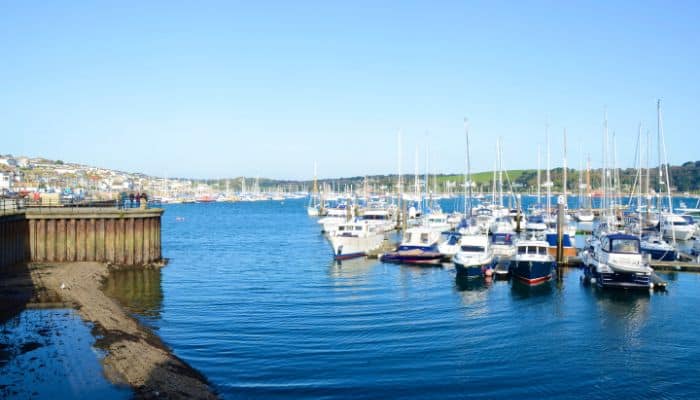
It is the UK’s biggest offshore bunkering facility offering all grades of marine fuel. Also, operators can expect efficient turnaround times and reduced costs due to its location.
The deepwater harbour offers sheltered anchorage for ships awaiting orders and those undertaking stores or change of crew members.
It is one of the few ports in the UK dealing with transhipment of explosives. Other cargo handled at the port includes forest products, feedstuff, grains, containers, coal, stone, scrap, general cargo etc.
Fishing is an old industry at Falmouth, and the harbour is close to the best fishing and shell-fishing grounds in the UK.
8. Milford Haven in Wales, UK
Milford Haven is located between Saint Ann’s Head and Sheep Island on the southwestern coast of Wales. Milford Haven Waterway is a natural harbour, the biggest port in Wales, and the 6th largest in the UK.
It is a well-sheltered deepwater port handling tankers, huge ferries, cruise liners, recreational craft and fishing vessels. It has several quays, a ferry terminal at Pembroke and an enclosed dock at Milford Docks.
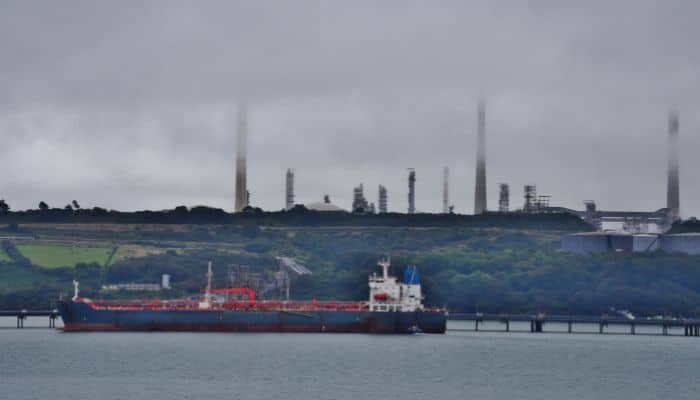
The waterway is a submerged valley that flooded at the end of the last ice age. Today, it is a busy shipping channel traversed by ferries, cargo vessels and pleasure craft. It is also the UK’s biggest energy facility.
Many services are offered here, including cargo handling, cruise calls, fish handling, ferry operations and the Marina.
It also has 2 LNG terminals, the South Hook and Murco. Others include Dragon LPG, Valero and Semlogisitics. This port handles approximately 48,800,000 tonnes of cargo and 325,000 passengers annually.
9. Grand Harbour, Malta
The Grand Harbour, or II-Port-il-Kbir in Maltese, is located beneath Valletta, Malta’s capital city and the three cities of Cospicua, Vittoriosa and Senglea.
The harbour hosts the port of Valletta, a natural deepwater port extending 3.6 kilometres inland, protected by a two-arm breakwater; the St Elmo’s Point breakwater at the north and Ricasoli Breakwater at the south.
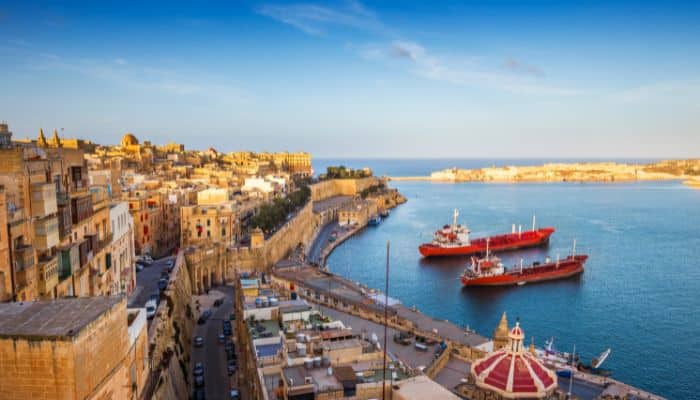
Lying on the southeastern coast of Malta, the port has many multipurpose quays for accommodating cruises and conventional cargo vessels. The depth of water in the harbour varies from 5 to 15 metres.
It offers ship repairs, bunkering, transhipment, storage and warehousing services. Traditionally, the harbour has been a naval and commercial port offering various maritime services.
Around 1,800,000 tonnes of general cargo, 502,000 tonnes of dry bulk, 1,000,000 tonnes of liquid bulk cargo, 820,000 tonnes of containerised cargo, 420,000 cruise passengers, 200,000 ferry passengers and over 4,000 ships are handled annually.
The port has specialised grain and cement silos, petroleum installations, and reception facilities.
10. Otago Harbour, New Zealand
Otago is a natural harbour of Dunedin in New Zealand. It is a long and indented stretch of navigable water that separates the Otago Peninsula from the mainland.
The harbour is home to the Port Chalmers, which lies along the harbour and the Dunedin’s wharf, which lies at the end of the harbour. Otago Harbour has been a sheltered harbour and a deepwater port for centuries.
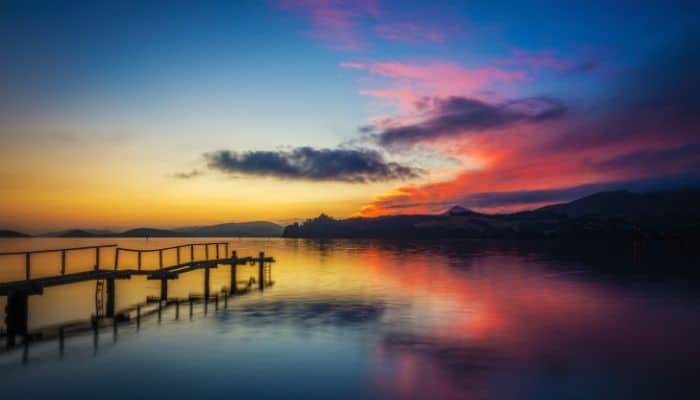
Located on the eastern coast of South Island, it has wharves at Dunedin, Port Chalmers and Ravensbourne. From the entrance, it extends five nautical miles to Port Chalmers and then goes 6.5 nautical miles to the port and Dunedin city.
It is an export facility for wool, chilled and frozen meat, tallow, timber, forest products, grains, seeds, woodchips, manufactured goods, dairy products, fruits, etc.
It imports phosphates, fertiliser, petroleum, LPG, vehicles, timber, paper, pulp, chemicals, textiles, and fish. Approximately 2,500,000 tonnes of cargo are handled at the port annually.
You Might Also Like To Read-
- 10 Major Ports In The Caribbean
- Top 10 Largest And Busiest Container Ports In The United States
- 10 Major Ports Of Scotland
- 20 Largest Container Shipping Companies In The World In 2023
Disclaimer: The author’s views expressed in this article do not necessarily reflect the views of Marine Insight. Data and charts, if used in the article, have been sourced from available information and have not been authenticated by any statutory authority. The author and Marine Insight do not claim it to be accurate nor accept any responsibility for the same. The views constitute only the opinions and do not constitute any guidelines or recommendations on any course of action to be followed by the reader.
The article or images cannot be reproduced, copied, shared or used in any form without the permission of the author and Marine Insight.
Do you have info to share with us ? Suggest a correction

About Author
Zahra is an alumna of Miranda House, University of Delhi. She is an avid writer, possessing immaculate research and editing skills. Author of several academic papers, she has also worked as a freelance writer, producing many technical, creative and marketing pieces. A true aesthete at heart, she loves books a little more than anything else.
Latest Maritime Knowledge Articles You Would Like:
Subscribe To Our Newsletters
By subscribing, you agree to our Privacy Policy and may receive occasional deal communications; you can unsubscribe anytime.















